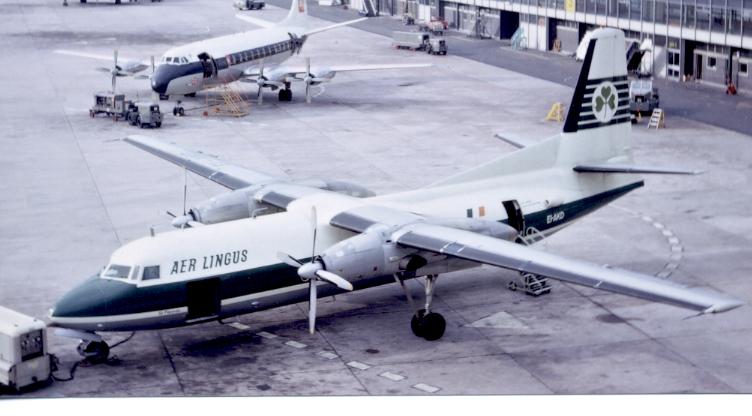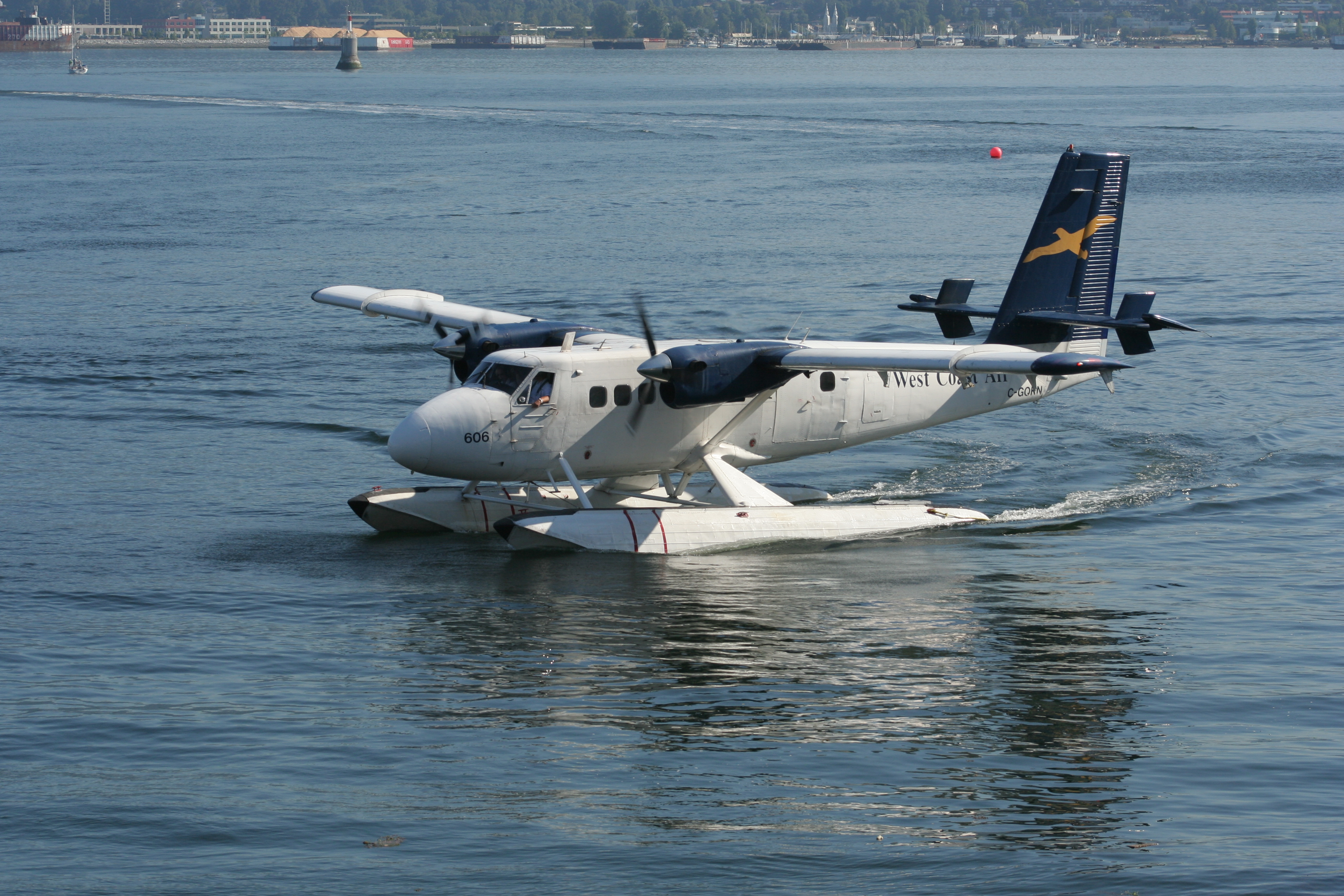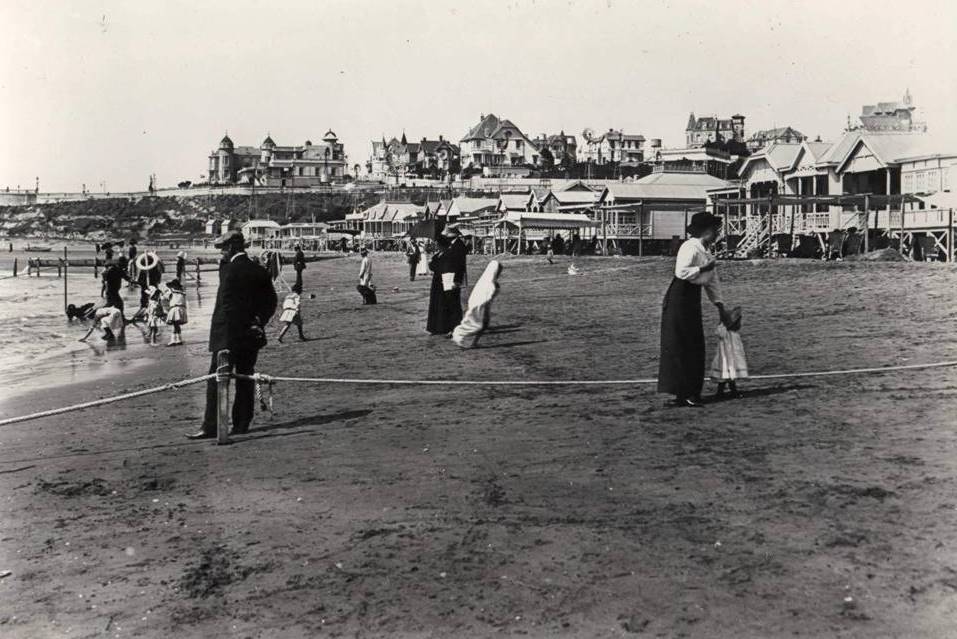|
LADE
Líneas Aéreas del Estado (LADE, ) is an airline based in Comodoro Rivadavia, Argentina. It is owned by the government of Argentina and operated by the Argentine Air Force. It provides domestic scheduled services, mainly in Patagonia. History The airline was established as an arm of the Argentine Air Force in to service unprofitable routes to remote areas. It was initially known as ''Líneas Aéreas Suroeste'' and consolidated under the present title in 1945 with another air force branch, ''Líneas Aéreas Noreste''. By , DC-3s, DC-4s and Vikings made up LADE's fleet. At March 1970, LADE had 150 employees and its fleet consisted of 14 DC-3s, two DC-4s, three DC-6s and six de Havilland Canada DHC-6 Twin Otters. The carrier started regular flights between Comodoro Rivadavia and the Falkland Islands in 1972. The Comodoro Rivadavia– Port Stanley run was initially operated with F27 equipment. The limited length of the runway at Port Stanley Airport resulted in weight ... [...More Info...] [...Related Items...] OR: [Wikipedia] [Google] [Baidu] |
Fokker F28 Fellowship
The Fokker F28 Fellowship is a twin-engined, short-range jet airliner designed and built by Netherlands, Dutch aircraft manufacturer Fokker. Following the Fokker F27 Friendship, an early and commercially successful turboprop-powered regional airliner, Fokker decided to embark on developing a new turbojet, turbofan-powered commuter aircraft that would build upon its experiences with the F27. During the design phase, a high level of attention was paid to market research and operator concerns; amongst other changes made, the prospective jetliner was increased in size, changing its maximum seating capacity from 50 to 65 passengers. During April 1962, Fokker announced the formal launch of the F28 Fellowship. The Fokker F28 directly competed with the American Douglas DC-9 and British BAC 1-11. On 9 May 1967, the prototype F28-1000 conducted its maiden flight. On 24 February 1969, Kees van Meerten, Fokker Board member, received the Airworthiness certificate, Certificate of Airworthiness ... [...More Info...] [...Related Items...] OR: [Wikipedia] [Google] [Baidu] |
Argentine Air Force
The Argentine Air Force (, or simply ''FAA'') is the air force of Argentina and one of three branches of the Armed Forces of the Argentine Republic. In 2018, it had 13,837 military and 6,900 civilian personnel. FAA commander in chief is Brigadier Gustavo Valverde. History The Air Force's history began with the establishment of the Argentine Army Aviation#History, Army Aviation Service's ''Escuela de Aviación Militar'' ('Military Aviation School') on 10 August 1912. Interwar period Throughout the years following World War I, the predecessor to the Argentine Air Force received various aircraft from France and Italy. In 1922, the was temporarily disbanded, resulting in the formation of ('Aviation Group One') as an operational unit. During 1925, the was reopened, and the ('Observation Group Three') created, with becoming known as shortly after. In 1927, the General Aeronautics Authority () was created to coordinate the country's military aviation. In that same year, th ... [...More Info...] [...Related Items...] OR: [Wikipedia] [Google] [Baidu] |
Port Stanley Airport
Port Stanley Airport , also merely known as Stanley Airport, is a small civil airport in the Falkland Islands, located from the capital, Stanley. This airport is the only civilian airport in the islands with a paved runway. However, the military airbase at RAF Mount Pleasant, located to the west of Stanley, functions as the islands' main international airport, because it has a long runway capable of handling wide-body aircraft, and allows civilian flights by prior permission from the UK Ministry of Defence (MoD). Port Stanley Airport is owned by the Government of the Falkland Islands, operated by the Falkland Islands Government Air Service (commonly known by its abbreviation FIGAS), and is used for internal flights between the islands and flights between the Falklands and Antarctica. It has two asphalt-paved runways; its main runway 09/27 is , and its secondary runway 18/36 is long. History Prior to 1972, there was no airport in the Falkland Islands with a paved (s ... [...More Info...] [...Related Items...] OR: [Wikipedia] [Google] [Baidu] |
Fokker F27 Friendship
The Fokker F27 Friendship is a turboprop airliner developed and manufactured by the Dutch aircraft manufacturer Fokker. It is the most numerous post-war aircraft manufactured in the Netherlands; the F27 was also one of the most successful European airliners of its era. The F27 was developed during the early 1950s with the intent of producing a capable successor to the earlier piston engine-powered airliners that had become commonplace on the market, such as the Douglas DC-3. A key innovation of the F27 was the adoption of the Rolls-Royce Dart turboprop engine, which produced substantially less vibration and noise which provided improved conditions for passengers; another major comfort feature was cabin pressurisation. Innovative manufacturing techniques were also employed in the aircraft's construction. On 24 November 1955, the F27 made its maiden flight; on 19 November 1958, the type was introduced to revenue service. Shortly after its introduction, the F27 was recognised as ... [...More Info...] [...Related Items...] OR: [Wikipedia] [Google] [Baidu] |
De Havilland Canada DHC-6 Twin Otter
The de Havilland Canada DHC-6 Twin Otter is a Canadian STOL (Short Takeoff and Landing) utility aircraft developed by de Havilland Canada in the mid-1960s and still in production today. Built by De Havilland Canada from 1965 to 1988, Viking Air purchased the type certificate and restarted production in 2008, before re-adopting the DHC name in 2022. In 2023, DHC started production of the 300-G, an upgraded version of the Series 400 with Garmin avionics. The aircraft's fixed tricycle undercarriage, STOL capabilities, twin turboprop engines and high rate of climb have made it a successful commuter airliner, typically seating 18–20 passengers, as well as a cargo and medical evacuation aircraft. In addition, the Twin Otter has been popular with commercial skydiving operations, and is used by the United States Army Parachute Team and the 98th Flying Training Squadron of the United States Air Force. Design and development Development of the aircraft began in 1964, with th ... [...More Info...] [...Related Items...] OR: [Wikipedia] [Google] [Baidu] |
Mar Del Plata
Mar del Plata is a city on the coast of the Argentine Sea, Atlantic Ocean, in Buenos Aires Province, Argentina. It is the seat of General Pueyrredón Partido, General Pueyrredón district. Mar del Plata is the second largest city in Buenos Aires Province. The name "Mar del Plata" is short for "Mar del Río de la Plata," and means "sea of the Río de la Plata basin" or "adjoining sea to the (River) Plate region." Mar del Plata is one of the major fishing ports and the biggest seaside Balneario, beach resort in Argentina. With a population of 682,605 as per the , it is the List of cities in Argentina by population, 5th largest city in Argentina. History Pre-Spanish era: The region was inhabited by ''Günuna Kena'' nomads (also known as northern Tehuelche people, Tehuelches). They were later (after the 11th century) strongly influenced by the Mapuche culture. 1577–1857: First European explorers. Francis Drake, Sir Francis Drake made a reconnaissance of the coast and its s ... [...More Info...] [...Related Items...] OR: [Wikipedia] [Google] [Baidu] |
Comodoro Rivadavia
Comodoro Rivadavia (), often shortened to Comodoro ( ), is a city in the Patagonian Provinces of Argentina, province of Chubut Province, Chubut in southern Argentina, located on the San Jorge Gulf, an inlet of the Atlantic Ocean, at the foot of the Chenque Hill. Comodoro Rivadavia is the most important city of the San Jorge Basin, and is the largest city in Chubut as well as the Southernmost settlements#Settlements of more than 1,000 inhabitants south of 45°S, largest city south of the 45th parallel south, southern 45th parallel. The city is often referred to simply as ''Comodoro''. It was at one time the capital of the Comodoro Rivadavia Territory, which existed from 1943 to 1955. The territory was a part of Chubut before and after its creation, and the city became the capital of the Escalante Department. It had a population of 137,061 at the , and grew to 182,631 by the 2010 census. Comodoro Rivadavia is a commercial and transportation center for the surrounding region, the larg ... [...More Info...] [...Related Items...] OR: [Wikipedia] [Google] [Baidu] |
Paraná, Entre Ríos
Paraná () is the capital city of the Argentine province Entre Ríos, located on the eastern shore of the Paraná River, opposite the city of Santa Fe, capital of the neighbouring Santa Fe Province. The city has a population of 268,889 inhabitants within its urban area. Greater Paraná has a population of 312,713 inhabitants. () History During the 16th century, inhabitants of the city of Santa Fe settled at the other shore of the Paraná river. The first settlers called it “''Baxada del Paraná''”. Between 1854 and 1861, it was the capital city of the Argentine Confederation. Economy Paraná is not only the head of the provincial government, but also an important river port for the transshipment of cereals, cattle, fish, and lumber from the surrounding region. The principal industries installed are the manufacture of cement, furniture, and ceramics. Cityscape The city center brings together colonial churches, European styles seen in structures like the 3 de Febrer ... [...More Info...] [...Related Items...] OR: [Wikipedia] [Google] [Baidu] |
Neuquén
Neuquén (; ) is the capital city of the Argentine province of Neuquén and of the Confluencia Department, located in the east of the province. It occupies a strip of land west of the confluence of the Limay and Neuquén rivers which form the Río Negro, making it part of the ecoregion of Alto Valle del Río Negro. The city and surrounding area have a population of more than 340,000, making it the largest city in Patagonia. Along with the cities of Plottier and Cipolletti, it is part of the Neuquén – Plottier – Cipolletti conurbation. Founded in 1904, it is the newest provincial capital city in Argentina. Etymology The name of the city comes from the Neuquén River, which in Mapuche language means "water that has strength". This name was already used since 1884 for the federal territory. Since 1902, it was used for the railway station of the town, which at that time was a hamlet called Confluencia. The name of the town was officially chosen in 1904, when it ... [...More Info...] [...Related Items...] OR: [Wikipedia] [Google] [Baidu] |
Miramar, Buenos Aires
Miramar is an Argentine city located on the coast of the Atlantic Ocean in Buenos Aires Province, south of Buenos Aires. It is the administrative seat of General Alvarado Partido. The name "Miramar" comes from the words ''mira'' (view) and ''mar'' (sea). History 1870: The land that now includes General Alvarado Partido came into the ownership of Fortunato de La Plaza. 1879: The area changes jurisdiction from Balcarce to General Pueyrredón. 1887: It was around this time the project to build Miramar was undertaken by Jose María Dupuy, Rómulo Otamendi (engineer) and Fortunato de la Plaza. 1888: Miramar was founded on 20 September. 1889: Construction began on the first church in Miramar. 1891: The Partido of General Alvarado was created on 29 September, with Miramar as its capital. 1911: The Buenos Aires Great Southern Railway arrived in Miramar and the company later built a comfortable hotel and adjoining golf course in the town. 1920: The first aeroplane arrives i ... [...More Info...] [...Related Items...] OR: [Wikipedia] [Google] [Baidu] |
Puerto Madryn
Puerto Madryn (; ), usually known as Madryn, is a city in the province of Chubut in Argentine Patagonia. It is the capital of the Viedma Department, and has about 103,175 inhabitants according to the last census in 2022. Puerto Madryn is protected by the Golfo Nuevo, which is formed by the Península Valdés and the Punta Ninfas. It is an important centre for tourists visiting the natural attractions of the Península Valdés and the coast. The name of the city conmemorates Love Jones Parry, one of the colonizers of Patagonia. The toponym originated around 1863, when Love Jones Parry, along with Lewis Jones travelled to Patagonia aboard ''Candelaría'' to decide whether that region was adequate for a Welsh colony. A new shopping mall in the city centre has helped tourism develop significantly, making Puerto Madryn a more attractive place for both international and domestic tourists visiting Patagonia. It is twinned with Nefyn, a small town on the Llŷn Peninsula in ... [...More Info...] [...Related Items...] OR: [Wikipedia] [Google] [Baidu] |
Lago Argentino
Lago Argentino is a lake in the Patagonian province of Santa Cruz, Argentina, at . It is the largest freshwater lake in Argentina, with a surface area of and a maximum width of . The lake's waters have an average depth of , with a maximum depth of . The deepest point of the lake is situated in the end of its narrow north-northwestern arm, in front of the retreating Upsala Glacier. This depth was discovered during a survey in 2001. The south-southwestern arm ends in front of the Perito Moreno Glacier. The glaciers debouche into the lake at these sites, making "trenches" in the bedrock. The lake reaches an astonishing below mean sea level. Lago Argentino lies within Los Glaciares National Park in a landscape accented by numerous glaciers, and the lakes of the area are fed by the glacial meltwater of several rivers. For example, the waters of Lake Viedma are fed by the La Leona River, and many other smaller mountain streams. Lago Argentino's drainage basin amounts to more tha ... [...More Info...] [...Related Items...] OR: [Wikipedia] [Google] [Baidu] |






